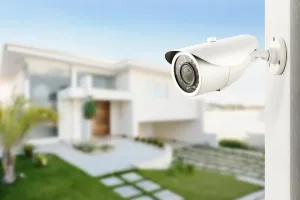Top Security & Home Technologies in 2026

The evolving technology in homes is already signaling how your home should look in 2026; it won’t just be a shelter, but an efficient and smart partner. From proactive home orchestrations in diverse applications and immersive entertainment to kitchen equipment integrations and climate, air, and wellness control technology, your pace becomes a convenient and intelligent hub. Yet with intelligence comes exposure. The conversation isn’t about gadgets anymore—it’s about designing homes that can think critically, defend dynamically, and operate sustainably in an era defined by both opportunity and risk.
1. Smart Energy Ecosystems: The Financial Logic Behind Intelligent Living
Forget simple voice commands; your smart home is now a strategic partner in your envisioned life, moving beyond basic convenience to deliver a holistic lifestyle. Smart Home Technologies are now an active defense against evolving energy challenges and a tool for tangible savings.Energy Management Platforms are now the fastest-growing segment of the smart home market, merging sustainability with tangible savings. North America’s adoption rate is projected to reach 46% by 2026, and Virginia stands out with its mix of Dominion Energy rebates and 2021/2024 building codes.
The 2024 Matter 1.4 standard, combined with Thread networking, enables homes to operate as a single synchronized system rather than as isolated devices. The tech supports low-power smart home devices, enabling lighting, heating, and solar storage to communicate seamlessly and adjust energy loads in real time for optimal savings.
For investors, this is more than efficiency—it’s economic foresight. The data shows that even modest integration (like smart thermostats and connected HVAC systems) offers significant annual savings and qualifies households for upcoming Inflation Reduction Act rebates. The ROI speaks louder than marketing ever could.
2. Security 2026: From Smart Defenses to Quantum Awareness
The debate on digital adoption is no longer reserved for enterprises—homes are now actively embracing it. As digital space is evolving so are the threats, which are equally evolving fast. So you can’t just be there at the base, you must proactively defend at machine speed.
For example, Deepfake impersonations are moving from celebrity hoaxes to household infiltration, mimicking familiar voices to breach weak systems.
However, 2026 is here with advanced security paradigms such as Agentic AI capable of establishing a continuous, autonomous defense layer. These AI agents will function as a digital bodyguard, constantly monitoring behavioral and biometric inputs (like subtle voice modulations or request anomalies) and executing real-time countermeasures to shield homes and people from such threats.”
This is where professionals designing and executing home tech bring creative insights, such as the concept of Quantum Security. While consumers won’t be buying Quantum routers, the vendors who serve them are already shifting toward Post-Quantum Cryptography (PQC)—ensuring your cloud-stored security footage and access credentials can’t be decrypted by tomorrow’s quantum machines.
3. Virginia’s Adoption Paradox: Incentives Without Impact
Here’s the irony—Virginia has some of the most supportive smart home policies in the nation but still trails in adoption. The problem isn’t access; it’s connection. Many consumers remain unconvinced that smart technologies truly pay back or fit naturally into daily routines.
To bridge that gap, the approach must move from selling devices to solving scenarios:
- Aging-in-place systems that enable seniors to live independently while remaining monitored safely.
- High-security home networks adopting Zero Trust Architecture (ZTA) to segment IoT devices—an idea inspired by federal cybersecurity standards.
- Energy optimization packages customized for rebate qualification and measurable savings.
This shift requires listening, not just selling. Virginia’s real potential lies in specialization—tailoring solutions to lifestyles, not demographics.
4. Health Technologies in Homes and the Ethics of Observation
The next era of home health is subtle, contactless, and deeply personal. Radar- and Wi-Fi–based monitoring systems can now detect falls, track breathing, and even measure heart rate without a single camera. For Virginia’s aging population, that’s independence without intrusion.
But innovation without integrity can quickly pull down all the gains. These systems capture vast amounts of behavioral and biometric data. Such details are often outside the scope of traditional medical privacy protections. That means homeowners must align with tech experts to ensure they adopt systems proven to align with ethical design principles from the start, prioritizing consent, transparency, and anonymization.
The winning innovators won’t just be technically advanced; they’ll be morally fluent. In 2026, ethical restraint is as powerful as technical capability.
5. The ROI of Trust: Building Virginia’s Next Generation of Smart Homes
Smart living in 2026 isn’t a race for novelty—it’s a strategy for sustainable, secure, and adaptive living. Virginia’s combination of rebates, efficiency codes, and federal incentives gives it one of the strongest economic backbones for smart home ROI in the U.S. The gap isn’t policy—it’s awareness.
For developers, installers, and technology providers, this creates a rare opportunity: to align innovation with human priorities. Homes that anticipate threats, conserve resources, and respect privacy will lead the market not just by function, but by philosophy—where technology serves, not surveils.
Ultimately, security and home technology in 2026 demand more than clever devices—they demand credible expertise. Virginia’s market, though slower to move, is primed for smart, ethical, and profitable innovation. The future home won’t just connect systems; it will connect values—merging intelligence, sustainability, and trust into the new standard of modern living.
